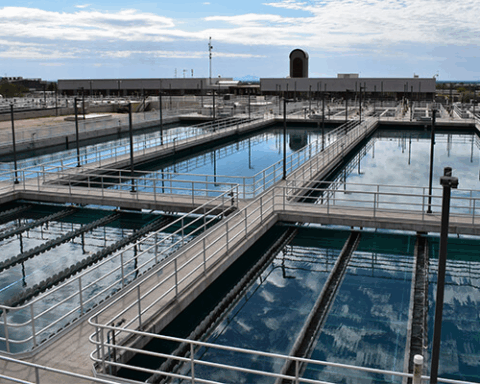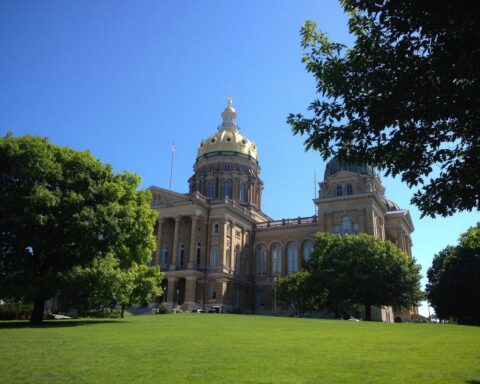The state of Pennsylvania could go ahead with a policy to reshape the energy market in the state by making companies pay for excessive carbon emissions. Gov. Josh Shapiro put forward a plan to the state Legislature that establishes a “cap-and-invest” program and set new clean energy generation goals.
The policy would create 15,000 jobs in the energy industry, return $252 million to electric utility ratepayers and generate $5.1 billion in investments in new energy projects, the administration said.
The policy is split into two parts. First, the Pennsylvania Climate Emissions Reduction Act or PACER, would make energy companies pay for climate-warming pollution above a threshold set by the legislature. Seventy percent of the revenue would be reinvested into rebates for electric utility customers, and the remaining 30% will fund incentives for energy efficiency, clean energy development and pollution-reduction programs.
The second part of the plan, the Pennsylvania Reliable Energy Sustainability Standard or PRESS, sets new targets for how much electricity must be generated by clean energy sources such as wind and solar.
“Pennsylvania is falling behind in the race to create clean and reliable energy,” Shapiro said in a press release. With the policy, the administration seeks to meet a “three-part test of protecting and creating energy jobs, taking real action to address climate change pollution, and ensuring reliable, affordable power for consumers in the long term,” Shapiro said.
Pennsylvania is the second-largest energy supplier in the country, but the state ranks 45th for investments in clean energy sources. Pennsylvania was an early adopter of setting clean energy targets with passage of the Alternative Energy Portfolio Standards (AEPS) in 2004 that mandated electric companies had to generate a portion of their electricity from sources such as wind and solar.
The governor’s plan calls for setting new 2035 targets. With PRESS, 35% of Pennsylvania’s electricity will need to come from sources that do not emit climate-warming carbon dioxide such as wind, solar, geothermal or nuclear. Ten percent must come from sources such as batteries, hydropower or biomass. and 5% will come from a mix of natural gas and hydrogen. Adding up to 50% of Pennsylvania’s electricity generation, the plan does not include targets for the other half of the state’s energy mix.
“Building a diverse, distributed network of power sources is the best way to keep the lights on in Pennsylvania and across the nation,” the Shapiro administration told Government Market News in an email.
The policy announcement comes after Pennsylvania has spent years attempting to join the Regional Greenhouse Gas Initiative (RGGI), a consortium of 11 neighboring states on the East Coast that formed in 2009. Those states have agreed to a unifying carbon emissions cap-and-invest program, but attempts by Shapiro and previous governors to have Pennsylvania join have been blocked in state court.
For now, the administration said it will continue to defend the court effort to green light joining RGGI, but that could change if lawmakers pass the new energy plan. Rather than continuing to pursue membership in RGGI, the plan would “give the Commonwealth control over its own energy future,” the governor’s announcement said. Shapiro’s vision would create a similar system to the RGGI states, but Pennsylvania lawmakers could give input on the details.
Environmental groups in the state have largely stood by the governor. Jackson Morris, a policy director at the Natural Resources Defense Council advocates for Pennsylvania to join with other states in RGGI, said, “We’re also open to alternative approaches such as what’s envisioned in the PACER legislation that could deliver comparable emissions reductions while generating vital funding to reinvest in communities across the state.”
“We can and must forge a path forward together that tackles climate change, protects consumers, and creates family-sustaining jobs,” Morris said.
The state’s oil and gas industry, on the other hand, rallied around the governor’s openness to abandoning RGGI. In a statement to Government Market News, Dan Weaver, president of the Pennsylvania Independent Oil and Gas Association said the state joining RGGI “would be extremely detrimental to Pennsylvania’s economy by killing good-paying energy jobs and increasing costs for energy consumers, while not guaranteeing benefits to Pennsylvania’s air quality.”
Weaver said the proposed policy “follows the same path” as joining RGGI. “This plan obviously needs to be more fully developed and scrutinized fully by the legislature,” Weaver said.
The level at which legislators set the cap on carbon emissions from Pennsylvania’s power plants is likely to be the most contentious detail of the plan. To start, the Shapiro administration is directing the Pennsylvania Department of Environmental Protection to calculate the carbon emissions cap.












